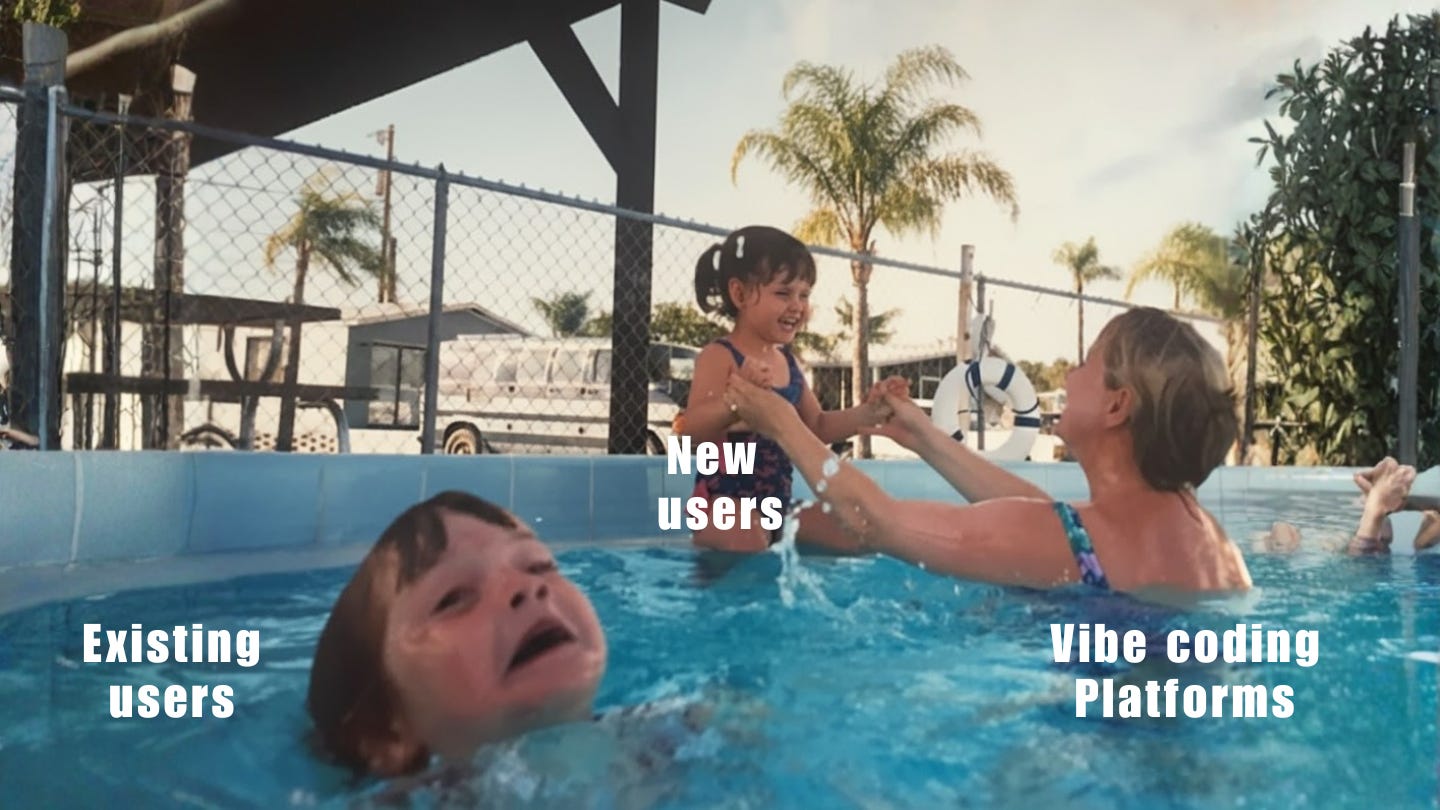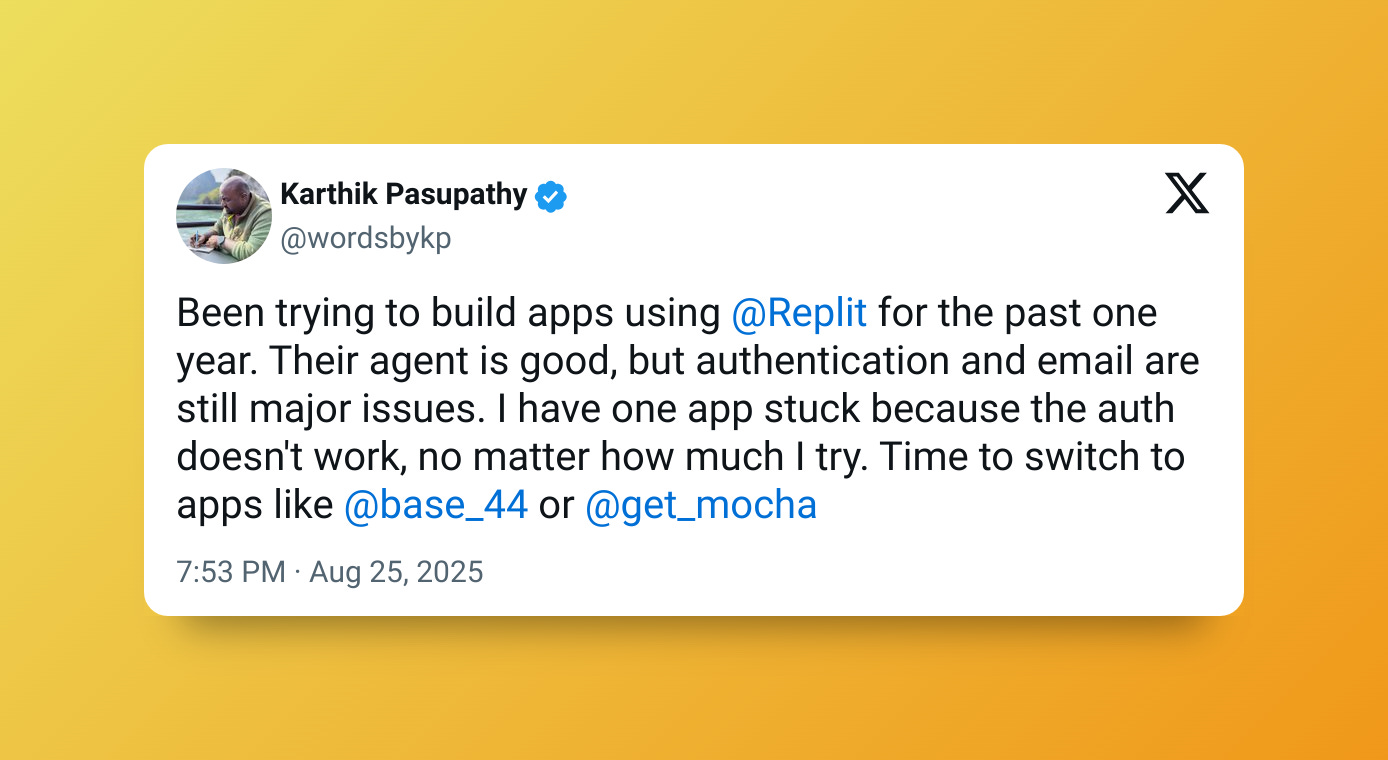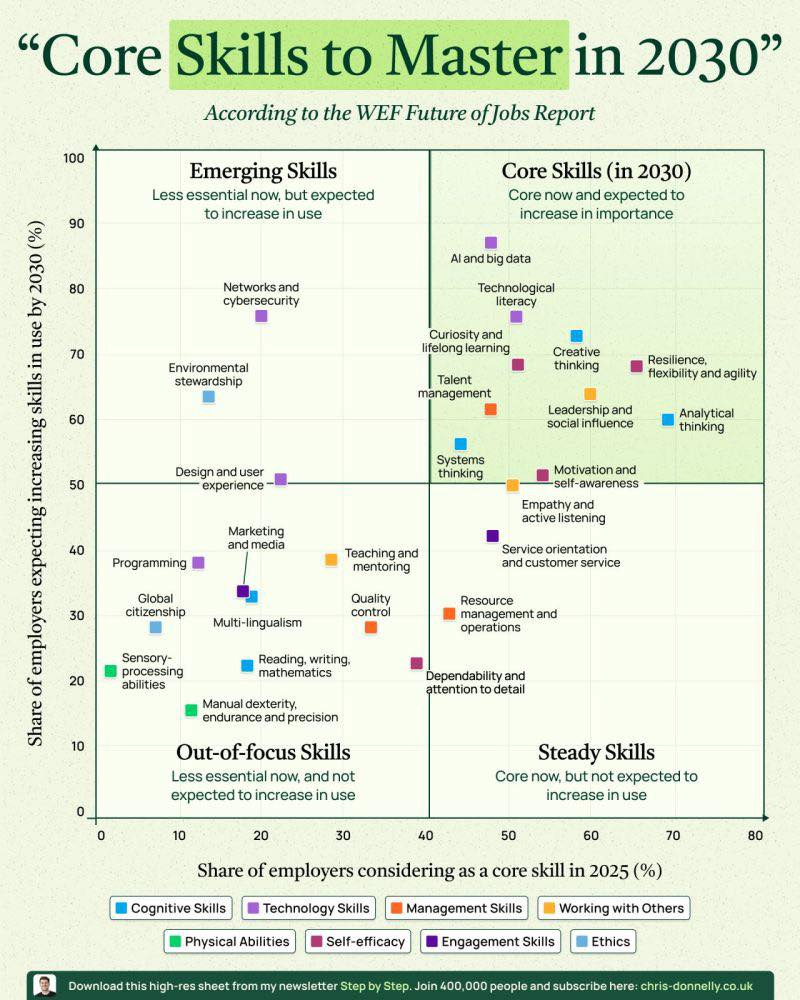Vibe coding apps don’t care about customer retention
Vibe coding platforms have ditched the traditional marketing playbook. And, that's not a good thing. Here's why!
I recently posted a tweet on X about why it was impossible for me to ship production-ready apps with Replit, and I mentioned that I’m thinking of switching to apps like Base44 or Mocha.
I mentioned all three vibe coding platforms. And the tweet got zero attention from any of the brands.
I wasn’t doing this for engagement farming. I have an annual plan of Replit Core, and I’ve been struggling to get something shipped for the last eighteen months. And I really wanted to switch to a platform that will help me do that.
But no one cared.
If this were five years back, things would’ve been different.
A marketer or a support person from Replit would’ve jumped in and replied about why the feature wasn’t available yet and offered a timeline.
Marketers or founders from Base44 and Mocha would’ve jumped in, explaining why their platform is better.
In some extreme cases, other vibe coding platforms like Bolt and Lovable would’ve jumped in, asking about what I’m building, and would explain why their platform would be the best.
But none of that happened.
I was frustrated with a product, and I publicly announced that I was ready to switch. But no one persuaded me to switch.
This clearly shows how vibe coding platforms approach marketing today. They focus exclusively on customer acquisition through popular channels like hackathons and influencer marketing, ignoring customer touchpoints that drive conversions and retention.
Let’s dive deep into why this is happening and what the long-term consequences of leaving money on the table might be.
The new age marketing playbook of vibe coding platforms
Today, vibe coding platforms and other AI companies are acquiring users through three major channels:
1. Influencer marketing
These days, influencers sell more AI than the AI companies themselves.
They promise us the moon and say things like, “I’ve built a Netflix clone or Twitter clone in 2 hours.” The videos are getting hundreds of thousands of views, and everyone is signing up for a trial.
There’s even a 15-20% discount users get through an affiliate link.
This is a great way to get users. No denying that. The growth numbers for these apps are crazy. Everybody is talking about reaching $50M or $100M ARR. But nobody is talking about the churn.
Nobody talks about how they’ve scaled their support teams to handle the queries of hundreds of thousands of ‘vibe coders.’ I haven’t seen anyone from these companies discussing their customer retention strategies.
User numbers can increase valuation and help the founders raise the next round. But support and customer success will help in building a loyal brand that will go a long way.
2. Hackathons
Vibe coding platforms are going all-in on hackathons as their primary user acquisition strategy, and the numbers are staggering.
Bolt hosted what they called the “World’s Largest Hackathon” in 2025 with over 130,000 participants. They offered more than $1 million in prize money, with a $100,000 grand prize for first place. The event ran for an entire month (May 30 to June 30, 2025) and attracted builders from every continent.
Lovable took a different approach with multiple smaller, high-intensity events throughout the year.
These hackathons are massive user acquisition funnels. Bolt’s 130,000 participants all signed up for accounts, tried the platform, and many continued building beyond the hackathon deadline. Lovable’s strategy of running frequent, themed events keeps bringing users back and creates multiple touchpoints throughout the year.
But here’s the problem: What happens after the hackathon ends?
3. Starter packs
Beyond hackathons, vibe coding platforms also leverage educational partnerships and starter packs to acquire users. They collaborate with programs like the GitHub Student Developer Pack and AI Engineer Pack in partnership with Eleven Labs to offer free pro plans for extended periods—sometimes six months to a year.
The strategy makes sense on paper. Students and professionals get free access to premium features, experiment with the platform, build projects, and ideally become paying customers.
However, the same retention question remains unanswered: How many of these students convert to paying users? What’s the upsell strategy when the free period ends? What ongoing engagement happens between the initial signup and the moment they need to pull out their credit card?
I’ve tried most of the vibe coding apps, and I’ve never gotten an upsell email from 90% of the platforms I tried.
You can’t spend on user acquisition like you have an endless source of funds. A crucial part of your user acquisition should happen automatically. And that is possible only when you focus on other aspects of marketing, support, and customer success.
Why has marketing taken a back seat?
I honestly don’t know.
I recently came across a chart on LinkedIn, made from the World Economic Forum’s (WEF) job report, that spoke about essential skills for 2030.
If you observe closely, essential skills like marketing and media, quality control, and attention to detail are marked as ‘out-of-focus skills’.
And skills like customer service and empathy are moved to steady skills, which are not expected to increase in use.
This shows what’s wrong with the technology landscape today.
You focus on innovation and momentum, but not on marketing, quality control, and attention to detail. And you don’t deploy enough resources to onboard, train, and support your users.
Result? Millions of users will sign up, try the new AI products for a while, and then switch to another service or lose interest and do nothing.
How can vibe coding platforms fix this?
The core of your technology product shouldn’t be the technology—it should be the users.
So, how can we empower and retain them?
Answer prospect and customer queries on social media: Banks, insurance companies, and airlines are extremely proactive on social media when it comes to user complaints. They know that immediate acknowledgement—even just saying, “We hear you, and we’ll get back to you”—is key to delivering a better customer experience.
Build a community around use cases: Vibe coding shouldn’t be positioned as a means to build products that make money. It should also be positioned as an alternative for people to build their own personal software that saves them hundreds of dollars in subscription costs. Vibe coding platforms can run a community around this idea on platforms like Flarum or Discourse so people can easily discover a wide range of use cases.
Weekly use case and feature showcase on YouTube: Vibe coding platforms can use YouTube to communicate to their audience. They can address bug issues, highlight a project of the week or month, and also talk about new features. Google’s Chrome for Developers YouTube channel does an outstanding job here.
Targeted email marketing campaigns: This is such an underrated strategy. When credits drop below a certain threshold, send an email. If users cancel, ask why and offer a promo code for a small discount. Show a contextual upsell popup when they log in. These might seem old-school, but they work.
The success of vibe coding platforms depends on balancing innovation with fundamentals such as responsive support, active community management, transparent communication, and strategic retention efforts. Companies that recognize this imbalance first and pivot accordingly will likely emerge as the true leaders in this space.
Building loyal customers requires more than just a revolutionary product; it demands meaningful relationships that extend beyond customer acquisition.





